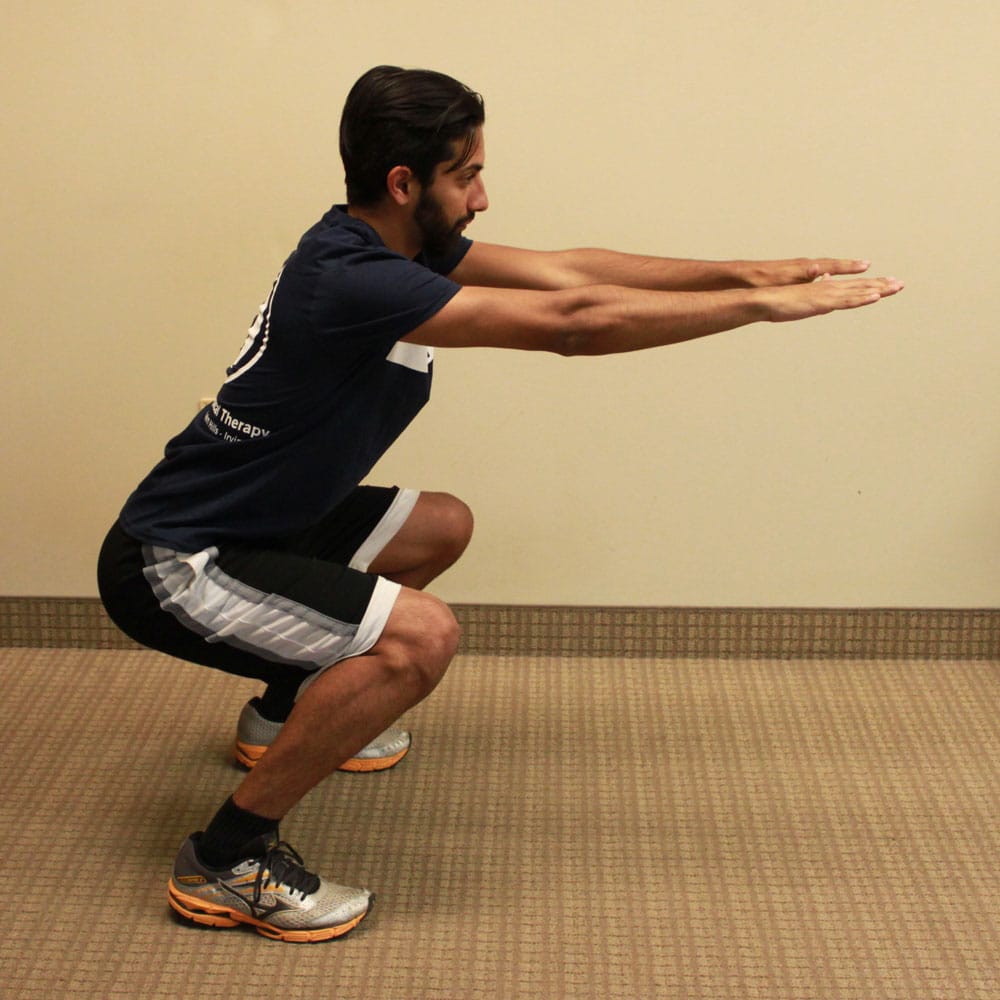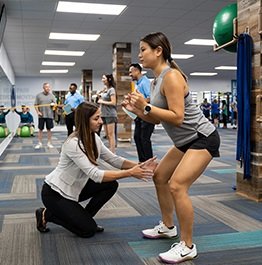
Squatting Basics: How to Perform a Perfect Squat
April 28, 2015Squatting is one of the most basic and fundamental movements that we perform during our everyday lives. Whether you are walking into a gym, physical therapy clinic, Crossfit box, or boot camp class, you’ll probably find several people performing a squat. Now, are you thinking that these settings don’t apply to you? Well, think about it this way; how many times do you get in and out of a chair? – whether it’s at your desk, at home on the couch, or even in the restroom– all these tasks involves the basic squat. We squat more often than we may think daily, so it is important that we do it correctly. Squatting is a compound exercise that utilizes multiple muscle groups working synchronously with one another and allows for the development of our core, back, and hip musculature. Therefore, improper squatting technique may lead to added stress in the back, hip, and knees contributing to pain in these areas. Here are a few tips on the perfect squat!
How to Perform a Perfect Squat

The Proper Squat
- Keep the trunk upright, shoulders relaxed, and spine in a neutral position
- Set feet hips width apart with toes slightly pointed outwards
- Slowly lower your body down as you initiate the squat at the hip followed by the knees.
- Keep the core tight by filling your abdomen with air and pushing your belly button towards your spine. This protects your spine and creates increased stability into the lower back
- Drive your hips in behind you to allow for the weight to be placed into your heels
- As you lower yourself, make sure you keep your knees lined up with your big toe and that your knees don’t buckle inward
- Having trouble keeping your knees from coming forward? Place an object in line with your knees as you are squatting and squat as if you were trying to sit in a chair behind you
- Continue to lower yourself down until your hips are roughly parallel with the floor
- Push up with your heels to return to the starting position and exhale
Now let’s examine common mistakes:

1. Overarching your back
- Your lower back has a natural curve to it. With any weakness in the back there are common ways for our bodies to compensate, either bending forward too much, or overarching your back.
- This in turn leads to excessive stress on your lower back and can contribute to low back pain

2. Keeping your weight on the balls of your feet
- Shifting your weight into the balls of your feet causes an increased stress to your lower back and knees.
- It also causes you to reduce the amount of work in your glutes and hamstrings; which can result in muscle imbalances.
3. Poor breathing technique
- Improper breathing can not only increase the stress in your lower back, but may also lead to an increased incidence of developing a hernia.

4. Knee’s buckling in
- When your knees move in as you are squatting this is usually a sign of weakness in your outer thigh muscles.
- When this occurs, the strain in your knee ligaments and joints increases.
For you visual learners, print, share or pin this handy guide with a friend!

Reader Interactions
Leave a comment
You must be logged in to post a comment.



